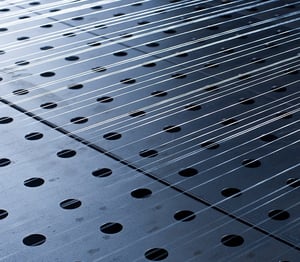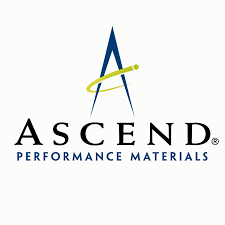 Nylon is a family of polymers, and all nylons share certain characteristics. However,there are some significant differences among types of nylon. Not all nylons are the same.
Nylon is a family of polymers, and all nylons share certain characteristics. However,there are some significant differences among types of nylon. Not all nylons are the same.
Specifically, there are significant differences between Nylon 6.6 and Nylon 6, which are two commonly-chosen options for industrial sewing and thread applications. Here’s a closer look at their characteristics and why you might select one over the other.
Chemistry, Characteristics, and Choosing
Chemically speaking, Nylon 6 is one monomer with 6 carbon atoms. Nylon 6.6 is made from 2 monomers with 6 carbon atoms each, which results in the designation of 6.6.
Both can withstand high heat and are generally tough materials with good wear resistance. However, when you take a closer look, their individual characteristics become more clear.
Nylon 6
Nylon 6 has the core characteristics of any member of the nylon family, including its hardness, stiffness, and toughness. It has good mechanical dampening and insulation qualities.
It slides with minimal abrasion, resists fatigue, and is very wear-resistant over time. As an added benefit, it has good machinability and can be worked into its final form fairly easily. It also has a lustrous finish.
Nylon 6.6
Nylon 6.6 is similar to Nylon 6 but not the same. It has a higher melting temperature. At 160 degrees Celsius, Nylon 6.6’s heat age strength at break is 13.6 kg versus Nylon 6’s 12.0 kg.
When you increase the temperature to 180℃, the difference becomes starker. Nylon 6.6’s heat age strength is 11.5 kg, while Nylon 6’s drops down to 2.6 kg. In some applications, this could make a huge difference.
Some industrial fiber processes, like tire cord, use heat to incorporate the fiber into the end product. Nylon 6.6 withstands these processes and continues to provide reliable strength well afterward. Nylon 6, by contrast, degrades or forces a change in the processes, reducing productivity.
Nylon 6.6 offers low creep, good stretch recovery, and higher abrasion resistance than Nylon 6 and most other materials you’ll find in the marketplace. In fact, its abrasion and heat resistance are the defining properties that make it a superior choice for industrial applications.
The fibers in Nylon 6.6 are 33% more abrasion resistant than Nylon 6 fibers, withstanding over 60,000 cycles over Nylon 6’s 40,000 cycles. In hard-wearing industrial fiber applications, this means much more reliable long-term performance.
Primary Uses of Nylon 6.6
Nylon 6.6 has several primary uses, including micro denier vs. heavy denier vs. high-tech. In its micro denier form, it is mostly used in apparel. It offers great toughness and wear resistance for high-performance sports gear and industrial workwear.
In its heavy denier form, it is used in tires and industrial products. In its high-tech form, you’ll find it in automotive airbags, parachutes, carpet, and other uses where extreme performance, durability, and reliability are of the utmost importance.
Primary Uses of Nylon 6
The major use of Nylon 6 is in industrial yarn. It is found in cords, heavy-duty fabric, toothbrush fibers, and many other products that rely on tough industrial nylon for a blend of strength and flexibility.
Nylon 6 is also found in fabrics with a certain type of desirable fashion sheen like hosiery, chiffon, and organza. This is due to the lustrous surface finish that is unique to Nylon 6.
A Comparison Table
To help you examine the differences between Nylon 6.6 and Nylon 6, we created this helpful table. On the left, you’ll see Nylon 6 and on the right, you’ll see Nylon 6.6 for comparison.
|
NYLON 6 |
NYLON 6.6 |
|
Less crystalline |
More crystalline |
|
Lower mold shrinkage |
Exhibits greater mold shrinkage |
|
Lower melting point |
Higher melting point |
|
Lower heat deflection temperature |
Higher heat deflection temperature |
|
Higher water absorption rate |
Lower water absorption rate |
|
Poor chemical resistance to acids |
Better chemical resistance to acids |
|
Withstands high impact and stress and better stands up to hydrocarbons |
Better stiffness, tensile modulus, and flexural modulus |
|
Lustrous surface finish, easy to color |
Also easy to color |
If you need additional assistance with choosing Nylon 6.6, Nylon 6, or another industrial sewing thread or yarn, we welcome you to reach out to us at Service Thread. We are dedicated to helping our customers understand the characteristics and benefits of nylon as well as all industrial sewing materials.


